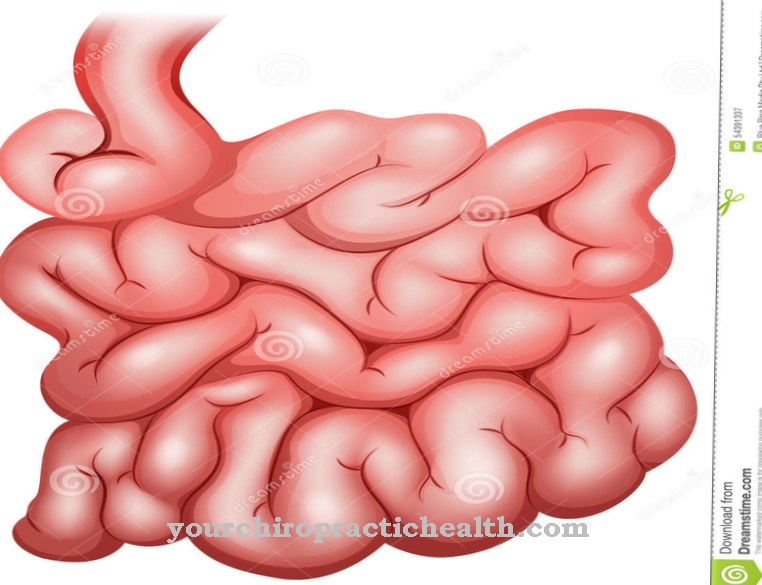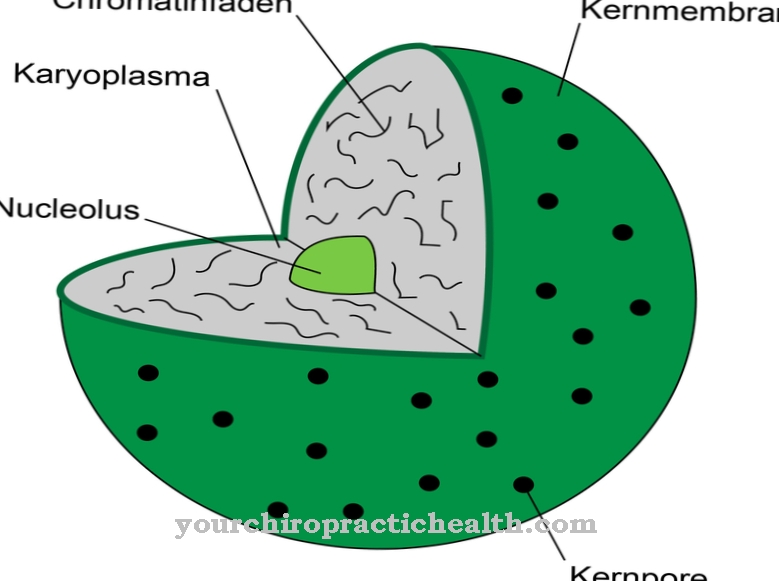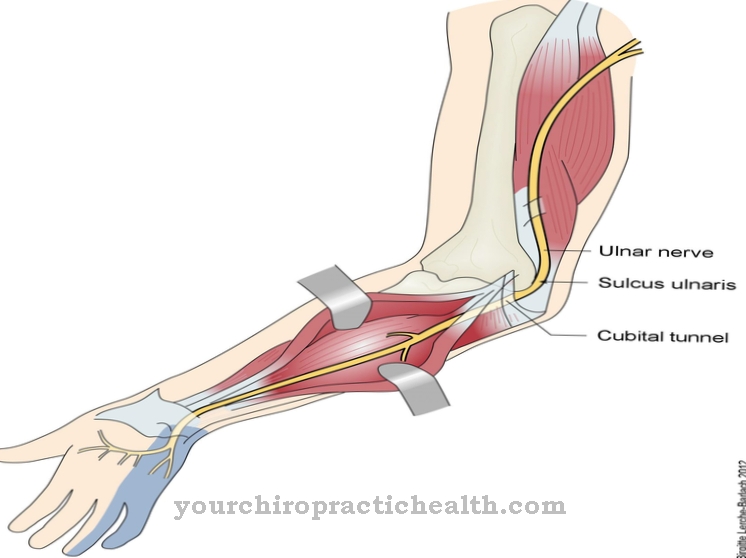Of the ureter serves as a connecting muscle tube between the renal pelvis and the urinary bladder to transport urine. Abdominal or flank pain, urinary congestion and fever are signs of impaired functioning of the ureter.
What is the ureter?

Of the ureter or. Ureter is a paired, muscular-tube-like hollow organ which, with a length of approximately 25 to 30 cm and a diameter of approximately 4 to 7 mm, connects the respective renal pelvis (pelvis renalis) with the urinary bladder.
The hollow organ can be divided radiologically into an upper section that extends from the renal pelvis to the upper edge of the sacrum (os sacrum), a middle section that extends to the lower end of the os sacrum, and a lower ureter section that then merges into the urinary bladder.
In its course through the abdominal and pelvic area, the ureter passes three physiological constrictions, in the area of which predominantly kidney or ureter stones or inflammations manifest themselves.
Anatomy & structure
Of the ureter runs behind the abdomen along the inner back muscles into the pelvic area, where it flows into the urinary bladder from behind.
In cross-section, the ureter has the characteristic structure of a membranous muscle tube. The innermost layer forms the so-called tunica mucosa (also mucosa or mucous membrane layer), the middle the tunica muscularis, a muscle layer made of smooth muscles, while the outermost layer, the tunica adventitia, as an anchoring layer of connective tissue, connects the ureter with the surrounding structures.
The ureter has physiological constrictions in three areas. These are located in the funnel-shaped transition from the pelvis renalis to the ureter, at the crossover of the ureter with the iliac or pelvic artery (arteria iliaca commonis) and in the uretero-vesical transition (ostium ureteris), where the ureter joins the urinary bladder at an angle.
This allows it to be compressed and closed by the muscles of the urinary bladder so that the urine cannot flow back into the ureter.
Functions & tasks
The main function of the Ureter consists in the transport of urine or urine from the paired renal pelvis into the urinary bladder. The smooth muscles of the tunica muscularis can contract successively during transport (peristalsis) and thus ensure that the urinary fluid is transported by the resulting peristaltic wave, similar to a conveyor belt, against the gradient in the direction of the urinary bladder.
This peristaltic wave is generated once to four times a minute by the muscles of the ureter and also serves to continuously clean the lumen in the hollow organ. In addition, the ureter is enough for a short section between the muscle layers of the urinary bladder because it does not have a locking mechanism itself.
During the emptying of the bladder, the muscle layers of the urinary bladder contract and at the same time automatically close the entrance to the ureter so that the urine cannot flow back (reflux) and cause bladder and renal pelvic infections. In addition, cramp-like or labor-like muscle contractions (colic) are used to attempt to remove deposits (e.g. kidney stones) from the ureter that have stuck to the narrow areas.
Diseases
Of the ureter often shows malformations that lead to disturbed urine transport or to reflux. These in turn can cause a hydroureter (ureter widening), recurrent infections such as acute or chronic pyelonephritis (inflammation of the renal pelvis), the formation of kidney or urinary stones and renal insufficiency.
If there is permanent reflux of the urine from the urinary bladder into the ureter, repeated inflammation of the ureter, renal pelvis and urinary bladder can manifest itself. Chronic inflammation can also cause the formation of grayish-white plaques in the area of the ureter wall (malacoplakia) or cystic ureteritis (inflammation with blistered rashes of the mucous membrane). Bacterially induced urinary tract infections (including coli bacteria) can cause malacoplakia.
The most common system disorders are narrowing of the ureter, ureterocele (spherical ureter enlargement), ureter ectopia, a disturbed vesicouretal junction as well as ureter duplex and ureter fissus. Megaureter (congenital ureter enlargement), retroiliac or retrocaval ureter, ureteral diverticulum (protuberance), ureteral stenosis (ureter constriction), valve (ureter with mucous membrane fold) or an extrarenal calyx system are rare malformations of the ureter.
In extremely few cases, the cells of the layers lining the ureter can degenerate and lead to the manifestation of benign or malignant ureteral tumors. Traumatic ureter injuries caused by penetrating abdominal injuries (gunshot, stab wounds) are just as rare. Iatrogenic injuries and deposits can cause a ureteral stricture.
The etiologically unexplained is retroperitoneal fibrosis, which leads to an increase in connective tissue and impairment of the ureter.
Typical & common diseases
- Urinary retention
- Frequent urination
- Low urination
- Ureteral stone
- Inflammation of the urethra (urethritis)
- Incontinence (urinary incontinence)



























